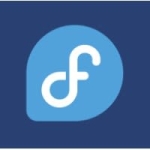What is our primary use case?
We use Red Hat Enterprise Linux for just about everything in my company. Our use cases stem from three-tier applications up through cloud deployments, Kubernetes, containers, etc. Prior to this, I worked in an enterprise as a Linux engineer.
How has it helped my organization?
Being able to onboard faster is definitely an advantage to other Linux systems. In the enterprise, we had an onshore and offshore model. Our offshore model was hard to get onboarded into Linux, even if they said they had Linux experience. There is a big difference between managing one or two systems in your basement to managing a fleet of Linux systems, and that does not always translate over. Having a Linux system that has a cockpit with it where you can give someone a GUI, even though the engineers do not really use it, helps onboard new people into the enterprise, into their jobs, and into their roles a lot faster.
We have a lot of really smart people. They are constantly figuring out ways to do things better and faster with Red Hat Enterprise Linux. The openness of it and the ability to create whatever we want to create or have to create to make our actual job easier has given our operations people more time to focus on the things they need to focus on, and not the nitty-gritty of the operating system. Tuning becomes super easy. It is scriptable. It is easy to automate. That gives them all the time back in their day to be able to go solve cool problems and not infrastructure problems.
Red Hat Enterprise Linux has enabled us to centralize development. All of our developers get their own developer environment, and that is all based on containers and some version of Red Hat Enterprise Linux. It depends on what they are at and what they are doing. So, we build and give it to them. They are up and running, and they just go. We have some legacy guys who are still helping our customers with older versions. Those people exist. I talked to someone earlier who still has a Red Hat Enterprise Linux 4 deployment out there.
When it comes to security and compliance, I like firewalld to do things at the host level and to complement what we are doing out in the enterprise with next-gen firewalls and things like that. I have had SELinux enabled on my systems and in my enterprises since it was available. It was a little bit of a learning curve, but it has helped to keep our systems as secure as possible. It complements well with what security groups are doing for the rest of the enterprise.
The portability of applications and containers built on Red Hat Enterprise Linux is great for keeping our organization agile. It is fantastic. We can run them on-prem. We can run them in the cloud. We can move them wherever we need them at the time. If something has to go to the edge for any reason, such as a bandwidth issue or an on-prem issue in the data center, we can push those workloads out. We could push all those containers to where they need to run and when we need to run them. It is super easy to do.
I have not used Red Hat Insights for long, but when I was a Red Hat Insights user, it was the first place I stopped to see what was going on and be able to quickly address and fix issues that Red Hat Insights found.
Red Hat Insights provided us with vulnerability alerts and targeted guidance. In terms of their effect on our uptime, we were able to plan our maintenance windows around what we were seeing in Red Hat Insights. We had the visibility and the ability to go in and plan things out. We could plan what needs to be done and then make that change and say, "This is what we are doing. Here is the playbook for it. We are going to run this in tonight's maintenance window." That prevented us from having to take machines down during the day because we found something critical at that time.
What is most valuable?
The features of Red Hat Enterprise Linux that are most valuable to me, both in the enterprise and now as a partner, are the enterprise features. We are able to have a Linux system that is open-source and that allows us to do domain trust IBM and all that fun stuff. We have a good solid enterprise Linux.
What needs improvement?
It is not broken. Linux is Linux. It has been since Torvalds created the kernel back in version one of the kernel. We have added more features. More things have come to Linux and kernel. All the AI stuff is a bunch of buzzwords. In the keynote today at the Red Hat summit, Chris Wright talked about lightspeed coming to Red Hat Enterprise Linux. What do we need that for? What are we doing with AI? Just the stability of it is fine. If anything cool comes out, I will be the first to check it out. It is a stable platform. It is a workhorse, and that is how we use it.
However, there should be training materials for new enterprises that do not cost an arm and a leg. Red Hat training is phenomenal, but it is expensive. There has to be a better way to onboard new engineers into Linux to really and truly compete with Microsoft. Microsoft is just easy. Everyone uses it. You have to use it in school, and you have to use it everywhere. From an onboarding perspective, we can improve and have an affordable training solution for someone who might not want to be an RHCE or an RHCA but still needs to do their job. It is not Linux's fault. It is what it is. It is a workhorse. It does its thing, but we can do better to enable customers to utilize Linux better.
For how long have I used the solution?
I have been using it since Red Hat Enterprise Linux 4. It has been about 20 years.
What do I think about the stability of the solution?
It is super stable. When Red Hat comes out with lightspeed or integrates SELinux, there are no huge rollbacks. Once it makes it downstream in Red Hat Enterprise Linux, you know that is going to work. Everything has bugs, and we get that, but we know it is going to work. We know that nothing terrible is going to happen to our production environment, so stability is fantastic.
What do I think about the scalability of the solution?
We can roll out more machines if we need more machines. We pull machines back if we do not need them anymore. One of the things that is lacking is that currently, there is no way to have ephemeral Linux instances for compliance month or your audit month. If you have to bring up a hundred machines, you have to pay for that upfront. That might be changing now, but in terms of scalability, that is a detriment to how smaller organizations can operate. Not everyone can absorb that cost. It is very scalable, but the pricing is a little prohibitive for scalability.
How are customer service and support?
Their support is awesome. Their TAMs are awesome. The technical support that you get is awesome. There is the ability to attach yourself to bigger customers. When you are a small enterprise and you have an issue, you sometimes filter to the bottom of that list because there are other way-bigger customers who are way louder than some of the smaller ones. Being able to talk to your team and ask how to get a problem fixed is phenomenal. They are able to look at the backend and go, "Oh, there is a large telco that is having the same problem. I am going to add you to that one." From a customer service standpoint and tech support specifically, engineering has been fantastic.
The ability to talk to the people out in the community who work for Red Hat and maintain all of that, from the open-source side and the closed-source side, is amazing. A lot of people do not realize that they can jump on Slack or other platforms, and they can talk to the guys who are responsible for it and figure out what is going on. Sometimes, they ask to open a case, and other times, they say that they know and they are fixing it. Having that accessibility is amazing. You cannot call Microsoft and ask them to let you talk to the engineer who made X, Y, or Z.
How would you rate customer service and support?
Which solution did I use previously and why did I switch?
I have been using Red Hat for 25 years.
How was the initial setup?
We are using Red Hat Enterprise Linux everywhere. We are using it on-prem. We call it the fourth cloud, so we have our own cloud like every enterprise does. They might realize that or not. We are using it everywhere. We have it at the edge, in the cloud, on-prem, and hybrid. It is the whole nine yards.
Our deployment strategy is to make it work and get it out there fast. We use all three cloud providers: GCP, Azure, and AWS.
Its deployment is super easy. Once you know what you need, rolling out Red Hat Enterprise Linux is super simple. You just go and repeat until you need to change something and then you change it.
We are using OpenShift to deploy Linux containers for a virtualization competitor migration. We are using it to migrate workloads from that vendor to Red Hat Enterprise Linux, so we have Linux running in containers to do their virtualization. We are running Red Hat Enterprise Linux containers as well for some workloads, but for the bootable container aspects of it, we essentially have a VM. This is how we use it there, and then everything else is pure containerization. It is not Red Hat Enterprise Linux-specific.
What about the implementation team?
We take care of the deployment for customers.
When I was in the enterprise, we did not take external help. We did all of that in-house.
What was our ROI?
We have seen an ROI but not specifically with Red Hat Enterprise Linux. Red Hat Enterprise Linux is the workhorse. Everything else that supports Red Hat Enterprise Linux is where you get your ROI. When you take Ansible, you start automating all of your configurations. You take Insights, and you are getting those playbooks to remediate security issues and all that fun stuff. That is where you get a return on your investment. That is where you see your engineering dollars go down and they can focus on other aspects of the business. That is not specific to Red Hat Enterprise Linux. It is the whole ecosystem.
What's my experience with pricing, setup cost, and licensing?
I have had sales folks who have been transparent with the pricing, and then I have had other ones who were not as great. Most of those ones that were not as great are not working for Red Hat anymore.
From a pricing perspective, there is supportability. What you get with that support is the ability to open a case before you do something. You can tell them that you are going to be upgrading your Satellite system or all Red Hat Enterprise Linux systems and that you need a case open. They open a case, and then when the day comes, they are there. They are ready, and they know what is going on. The price point for that is phenomenal because you are paying for support. From a pricing perspective, it is on point. It is definitely a value-add, and it is extremely transparent from a customer standpoint.
Which other solutions did I evaluate?
I have evaluated other solutions. Manageability is the main difference. I have successfully ripped out other solutions in enterprises that I went to and replaced them with Red Hat. They had large fleets and no centralized management. When you come to Red Hat Enterprise Linux, you have the Red Hat Satellite server. You have Red Hat Insights. You have all of those things that help you manage large fleets and a large number of Linux machines. When you evaluate other solutions, they have some centralized management now, but that was not common previously. It is kind of a hodgepodge. They are stitched together with all these other solutions, but it does not make sense. In one case, they jammed Linux into their management platform used to manage databases, and it did not work. How do you manage a thousand machines on some busted piece of management software?
What other advice do I have?
If a colleague is looking at open-source, cloud-based operating systems for Linux instead of Red Hat Enterprise Linux, they should go for something based on the use case. They have to look at what they are trying to do and what they want to do. They can get away with Fedora, for instance, but the question for me always comes down to supportability. Do they want to be able to call someone and say, "This is broken. Help. Hurry," or do they have the skills in-house to do that? Most companies do not have those skills. They have one or two very good engineers, but they cannot fix everything at the same time. If they want portability, then they should not look somewhere else. They should go to Red Hat Enterprise Linux because they have the Red Hat name behind it.
I would rate Red Hat Enterprise Linux an eight out of ten. There is always room for improvement in a product. Tens are unicorns. No one gets a ten. Maybe if Jesus made an operating system, he would get a ten.
Disclosure: My company has a business relationship with this vendor other than being a customer. Partner

















